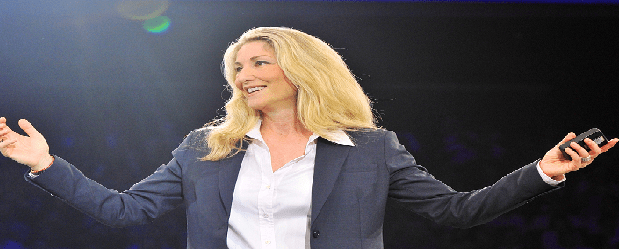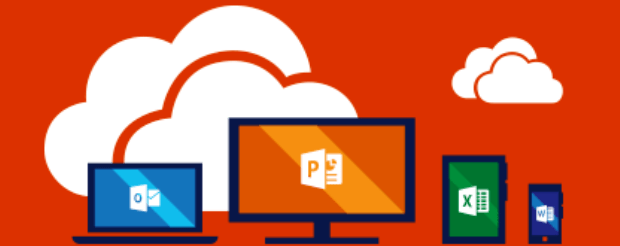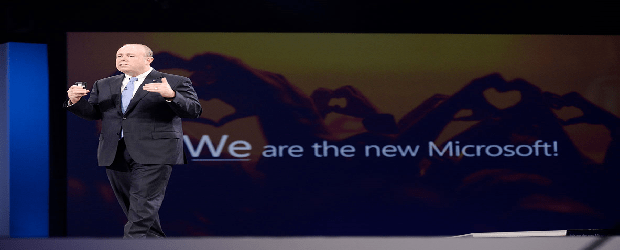Orlando, Fla. – One of the top market analysts in the world Tiffani Bova, VP of Gartner Research, has comprised a list of essentials for channel partners who are in tough with the transition to the cloud. The noted analyst delivered her top 10 list to an overflow audience at the Microsoft Worldwide Partner Conference and said it’s not too late for the channel to embrace the cloud phenomenon.
Before Bova unveiled her must-knows for the channel she told the crowd to ask themselves these hard, soul searching questions:
- What kind of partner should I become?
- Should I invest in cloud services?
- Do I have the rights sales and technical skills?
- Will our products and services resonate?
- Can you think 2020 instead of 2015?
“We have made a success of deploying technology, fixing it and doing it again. Margins are getting compressed and customers are thinking differently today. We can’t think of solving customer problems the same way we did in the past,” she said.
Bova added that she can show channel partners the path but only they can walk that path.
No. 1 Cloud as the platform for transition
Cloud has become the platform for the next transition, but Bova warns it is not necessarily what the channel should be shooting for. Cloud is a way technology can be delivered. “You need to start here. Cloud is not the end state – it is where you should begin,” she said.
Social, mobile, cloud and information changes the style of how people work. From her market research at Gartner, customers are going down this path without a lot of help from the channel. Transaction levels are coming down and that means transactions in the channel are not as valuable as before. “If you bill it you do not necessarily own it. This is not a strategic relationship. Don’t worry about billing. Sending a bill does not prevent you from being displaced.”
According to Bova, public cloud services bring the power of enterprise-class computing to organizations of any size. That means more value for the SMB than larger companies. They can use this to be more competitive. Customers are seriously social to their brand and can be much more connected with customers than any other form of advertising.
Bova recommends: Mobility is a must have through 2020. Mobility will be a top priority on SMB’s IT spending driven by cost savings and productivity gains. Mobile-based working environments will create IT spending for mobile devices, applications, MDM, cloud and virtualization.
Meanwhile, BYOD will continue to be a major consideration for SMBs.
No .2 The Journey to Digital Business
There is a confluence of channel partners looking to find the cloud path to success and customers thinking differently in how they approach their own journey to a digital business.
Bova recommends: The channel should focus on becoming bi-modal because the need to work at two speeds. The practice of managing two separate coherent models of IT delivery: One focused on stability and the other on agility.
Mode 1 is traditional. “The channel should think long projects like running a marathon,” Bova said.
Mode 2 is exploratory. “Need to take risks with vendors not familiar to customers so the channel needs to think like a world-class sprinter,” she added.
Since there are plenty of channel partners stuck in the middle there really is not one fit for anyone because these speeds are at odds with networking and the talent available in the marketplace.
Gartner estimates by 2017 about 75 per cent of IT organizations will have bi-modal capability; half will make a mess.
Bova suggests that Mode 1 partners establish sequential processes and linear relationships so that they can plan top down decisions making.
For getting to Mode 2, Bova believes you need to hire in clusters by hiring organically and acquiring talent from digital business start-ups.
Crowd-source and co-create are two strategies you can employ for recruiting innovators. Others are promoting or participating in hackathons and other contests.
“Leverage the global talent ecosystem through adaptive sourcing.”
No. 3 The Digital Dragon
By 2020 75 per cent of apps will be going towards supporting digital businesses. These will be built not bought, Bova said. “The digital dragon is upon us.”
Bova recommends: Developing a lens for examining how people will work and how customer’s business relationships will evolve in digital scenarios.
“Every company becomes an IT company. Disney tracks customers so they can resell their IP to another audience attraction type of company.
Here are some examples:
- The Philips Lightbulb is sold for 99 cents. Philips gave its people 120 days to reimagine it and tasked them to digitize the lightbulb. After 120 days the results was the creation of a new revenue stream: coloured bulbs that can change the atmosphere of a kitchen or a bedroom. Coloured lightbulbs are priced at $50 instead of 99 cents.
- American sporting goods and apparel vendor Under Armour is now a now digital company because they make apps. Under Amour designs shirts with sensors in them that tells a person after 50 wears you might need a new shirt.

Bova asked the audience at WPC 15 in Orlando if they knew that GE is the 3rd largest software company in the world. “My customer may do dry cleaning why not develop an app for them,” she said.
No. 4 Internet of Things
Remember the questions Bova asked in the beginning? Think 2020? Well by 2020, Gartner predicts there will be 7.3 billion personal devices around the world. The Internet of Things by then will be a driving force behind business and technological change.
It’s not too hard to image smart pills, smart cars, smart trash bins, LED streets and lamps because they are already here.
Bova recommends: To think from the thing to the person. She says things are assets that captures big data, but the next stage may be a network of assets such as things talking to smartphones that also can talk to your scale.
You may have heard the Internet of Everything from Cisco; that comprises systems, places, things and people such as smart cities.
One of the more interesting IoT uses is the Tide button on new washing machines. Press the Tide button and it orders more Tide after 50 loads. “It’s a thing selling to another thing and that is highly disruptive. Google bought Nest not to get into the cooling business but the data business. They sell it back to the power companies to do better loads in the area,” Bova added.
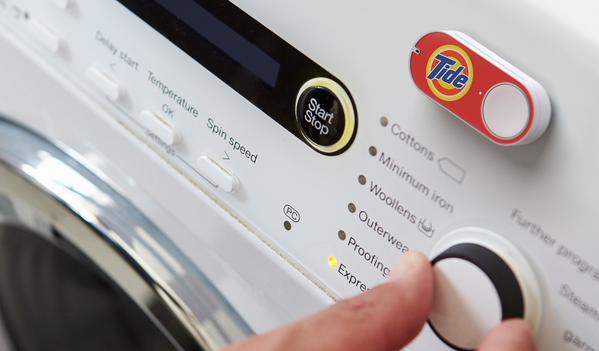
No. 5 3D Printing
In the near future don’t be surprised to see delivery trucks equipped with 3D printers. It’s in the works now and this service will enable people to order an item online and as the truck revs its engine the 3D printer starts producing your item and the customer get a unique shopping experience.
Gartner predicts that by 2017 nearly 20 per cent of durable goods e-tailers will use 3D printing to create personalized products offerings.
Bova recommends: A strategy shift here to maximize the future stop glorifying your past.
One current example is personally designed casts for broken arms that can be built based on your personal break through the use of 3D printing. “Make it personal,” she said.
Other examples are:
- Iceland’s Land of Giants, power lines designed by Choi+Shine Architects using 3D printing to transform mundane electrical towers into statues based on Icelandic landscape. Bova said this became more expensive than steel, but it reimagined the look of power lines.
- Through 3D printing pop singer Rihanna dazzled the New York City Fashion Awards last year in a dress made up of 200,000 Swarovski crystals valued at $1 million.

3D Printing helped product Rihanna’s dress for NYC Fashion Awards 2014
No. 6 The disruptive customer
The most disruptive thing in the market today is not actually technology but rather the customer.
Bova recommends: redefine what customer engagement means and look outside the normal suspects to identify opportunities.
No. 7 The free coffee experience vs. the $5 coffee experience
Forget technology products leapfrogging each other every three months. The new competitive battleground has become the customer experience.
Microsoft, again, provided free coffee for attendees of WPC 15, but that coffee was all but ignored for Starbucks, Bova observed.
“There is free coffee outside this room, but the coffee place I can’t say the name anymore has a long line-up.”
Bova recommends: Rethink the definition and value of your brand. Ask yourself are you selling a product or an experience. “And, customer experience is not customer service,” she said.
A recent example of this is Taylor Swift sent out a tweet directed at Apple on the 90 days of free music giveaway. She said why doesn’t Apple give away 90 days of its IP for free? Now Apple is paying artists. “That’s the impact of crowds,” she said.

No.8 New sales skills
“Hey,” Bova shouted too the crowd. “The 80s called. The 1880s that is. And, they want their sales strategies back.”
Sales strategies such as outcome-based selling, playbooks or sales manuals, winner’s circle club, sales training academies, sales scripts, territories, sales contests, high pressure sales tactics, predatory pricing, quotas, commission-based selling, and FAQ pages where all developed and honed in the 1880s by the CEO of NCR John Henry Patterson.
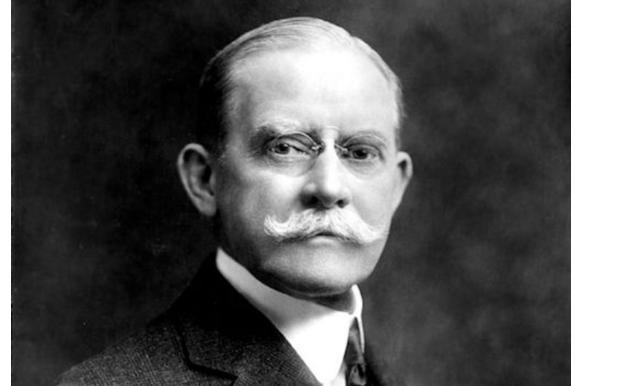
John Henry Patterson, CEO of NCR
Bova recommends: New customer demands require new sales skills, commission plans and organizational structure.
Customers are more educated today and begin the purchasing process with a high degree of knowledge. “So why do the same old thing from the 1880s?”
No. 9 The channel is in flux
The Top 8 recommendations only touch the surface of what the channel ecosystem will deliver in the future. “The channel is in flux.”
Bova recommends: Take the time to understand the impact market forces will have on your overall strategy. Be really strong on a vertical practices and with solutions. To be bi-modal you need to be a bit larger of an organization.
No. 10 Channel 2020
By 2020 Bova predicts the mix of partner types will look very different and the development of IP will be the key differentiator
Bova recommends: Rationalize future investments with an eye towards the future. Rethink your role inside a customer’s business.
Ask these questions:
- How will your technology and services help your customers grow their business?
- Can I lead business transformation for my customer?
- How do I deliver a compelling sales experience?
- Am I able to deliver agile solutions?
- How soon should I develop a new value base that includes my own IP?
- Should I be customer or market led instead of vendor led?
- What does a digital leader look like?
Bova added that the channel should look to rethink the customer profile too because the usual suspects may not be involved any longer. Also the sales funnel is redefining itself so ensure that you are fluid in your approach.
Finally, Bova left the audience with this piece of advice: “Dream big, set goals and take action!


